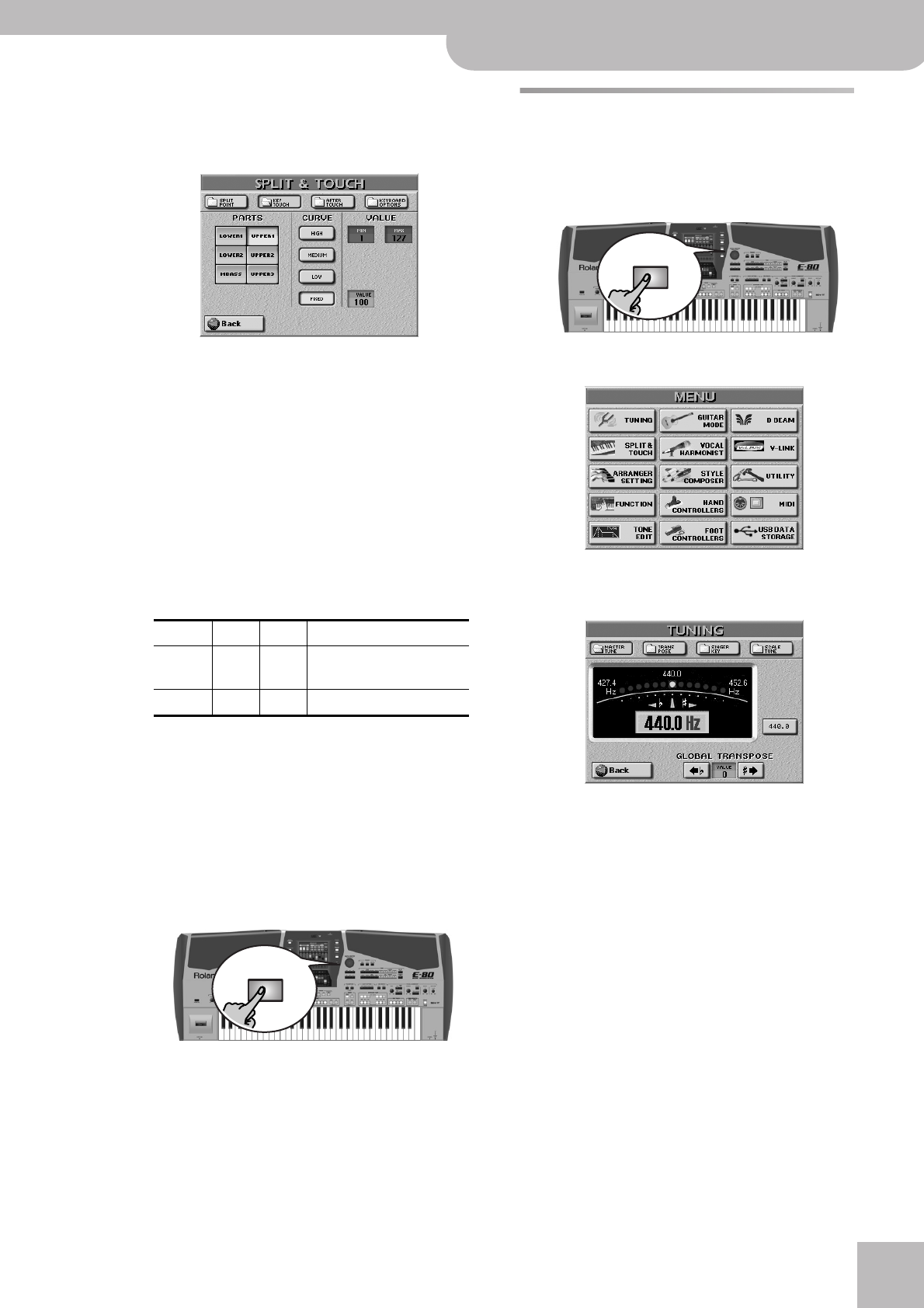
Master Tune
E-80 Music Workstation
r
69
where you can set the velocity value to be used
instead of the continuous flux. Press that field and
use the [DATA÷ENTRY] dial or the [DEC]/[INC] buttons
to select the desired velocity value (1~127).
Velocity switching (Min and Max)
You can also specify the smallest (MIN) and highest
(MAX) velocity values with which you can trigger the
selected part. This is probably only useful when applied
to two Keyboard parts. Do not change these values if
you have no intention of using a “complementary” part
because, otherwise, you may start wondering why the
LW1 part, for instance, only sounds at high or low
velocity values.
MIN and MAX can be used effectively for switching
between two Tones simply by striking the keys harder or
softer. Doing so allows you to alternate between two
sounds. Consider the following example:
Both parts must be on. These settings allow you to
trigger the Bandoneon sound with velocity values
between 1 and 105 (low to relatively high velocity),
while velocity values above 106 only trigger the vio-
lin. Try it – it sounds spectacular.
There are countless other possibilities, such as using
MIN= 80/MAX= 127 for the MELODY INTELL part
(page 84), so that the automatic harmonies are only
added when you really want to hear them.
(5) Press the [EXIT] button to return to the main page.
Master Tune
This is not really a performance function, but it allows
you to tune your E-80 to acoustic instruments that
cannot be tuned.
(1) Press the [MENU] button.
The display changes to:
(2) Press the [TUNING] field, followed by the
[MASTER¥TUNE] field.
(3) Use the [DATA÷ENTRY] dial to set the desired tun-
ing.
The default value is “440.0”. You can return to this
value by pressing the [440.0Hz] field.
(4) Press the [EXIT] button to return to the main page.
See page 67 for the Global Transpose parameter.
Part Min Max Sound
UP1 1 105 Bandoneon 2
([ACCORDION], P1)
UP2 106 127 Folk Violin ([STRINGS], P2)
EXIT
MENU
